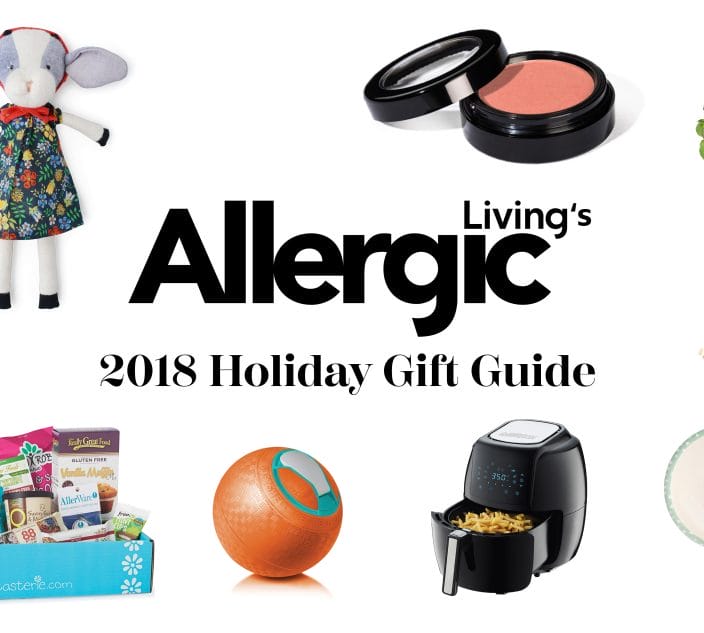Early introduction of major allergenic foods may help to protect babies from developing food allergies, according to new findings from the researchers behind the groundbreaking LEAP and LEAP-On studies. While highly positive results were seen for early peanut and egg introduction, more study is needed to gauge the effectiveness of the approach across other major allergens, and to determine for parents the best feeding methods.
At the AAAAI allergists’ 2016 meeting, study author Dr. Gideon Lack explained that the EAT (Enquiring about Tolerance) study was designed to see if early consumption of peanuts could prevent peanut allergy not only in children at high risk for reactivity, as seen in the LEAP and LEAP-On studies, but also in a general population of breastfeeding infants.
EAT Study: 6 Foods Tried
As well, “we wanted to see whether the concept of ‘tolerance induction’ could be extended to other food allergens – namely egg, milk, fish, wheat and sesame – in addition to peanut,” Lack, a professor of pediatric allergy at King’s College London, said during a press conference at the AAAAI meeting.
The EAT study, published in The New England Journal of Medicine (NEJM), involved 1,303 infants, with an average age of 3 months, who had been exclusively fed breast milk. Babies who had consumed even a single bottle of milk formula could not enter the study.
Similar to the LEAP study, U.K. researchers separated the children into two groups: The “standard introduction” group continued to be exclusively breastfed until they were about 6 months old, in accordance with World Health Organization (WHO) recommendations, which are followed in Britain. At 6 months, allergenic foods could be introduced at the parents’ discretion.
First Up, Yogurt
The “early-introduction” group underwent skin-prick testing in case of an already existing food allergy. If a baby had a positive result to a food but was able to eat it in an oral food challenge without symptoms, parents were asked to continue feeding at least 2 grams of the allergenic protein twice weekly from 3 months of age.
Milk, in the form of yogurt, was the first food to be introduced and wheat was the last, with peanut, sesame, fish, and egg added into the children’s diet randomly in between, explained Lack.
Researchers then assessed the rate of food allergy in all participants when the children reached 1 year and 3 years old.
EAT Study Key Findings:
- By the end of the EAT study, 32 out of 567 (5.6%) of the “early introduction” participants had developed allergy to one of the six tested foods, compared to 42 of the 595 (7%) infants who were fed only breast milk until about 6 months. These figures translate to 20 percent lower prevalence of food allergy in the “early introduction” group.
- Only about 42 percent of the “early introduction” group managed to introduce all six allergenic foods according to the researchers’ specifications. This ‘adhered-to’ group saw a more significant rate of allergy reduction.
- The results for peanut were compelling: none of the infants who were fed the correct amount of peanut developed peanut allergy by age 3, a finding in keeping with results of the LEAP trial.
- Early introduction of egg-white protein reduced the rate of egg allergy by 75 percent.
“We found that in the overall population, there was a modest 20 percent lower rate of food allergy in the “early introduction” group. But that was not statistically significant,” said Lack. “That means that we can’t conclude that this modest decrease was due to the intervention – it could have been due to the intervention, or it could have been due to chance alone.”
The overall results did not indicate that early consumption significantly protected against allergy, but a closer look at the data reveals there are other factors to consider.
Protocol Was ‘Hard Ask’
“It was quite a hard ‘ask’ for the families to adhere to all that food consumption in the young babies,” said Lack. He cites the fact that only about 40 percent of participants regularly ate at least five of the six allergenic foods. The researcher admits that the required serving size “is actually quite a lot for a young baby.”
Dr. George Du Toit, Lack’s colleague on the LEAP studies, said there were multiple factors that made this diet of allergenic foods hard to digest for families.
“The infant may not like the smell or the new taste or the parent may not culturally like something like tahini [sesame],” Du Toit, a consultant in pediatric allergy at Guy’s and St Thomas’ Hospital London and Evelina Children’s Hospital. “With fish and egg, this requires some cooking, as opposed to peanut from the jar or yogurt.” He told the press conference, “there are many components that go into which food is acceptable to families.”
While feeding infants these foods was complicated, the study says early introduction resulted in no adverse effects or anaphylaxis in those who became part of the early introduction group.
Easier Way to Offer?
An accompanying commentary in the NEJM from Hong Kong-based pediatrician Dr. Gary W.K. Wong echoed the growing evidence of early-introduction benefits. But Wong said questions remained about how to craft a successful early-feeding strategy for a population. He noted that many families found the six-food EAT trial protocol too demanding, he suggested a need to identify minimum amounts of the foods in order to protect against allergies, and asked whether there might be ways to prepare foods that would make regular feeding easier for parents and babies.
In the EAT study, Lack and his team highlight the need for follow-up study, particularly to further investigate issues such as dosing (amount of food consumed) and how to introduce allergenic foods to infants in a way that works for parents. And although the lessons from EAT are not as clear cut as those from the LEAP and LEAP-On studies, Du Toit said that there is still much that can be learned.
“Through these studies, we are learning how to prevent disease, optimize nutrition and to make families’ lives easier,” he said.
–with files from Gwen Smith
Related Reading:
Feeding Babies and Toddlers to Protect Against Food Allergies
Introducing Milk, Egg and Peanut to Babies Protects Against Food Allergies, Study Finds
LEAP-On Study Shows Peanut Allergy Protection Endures






